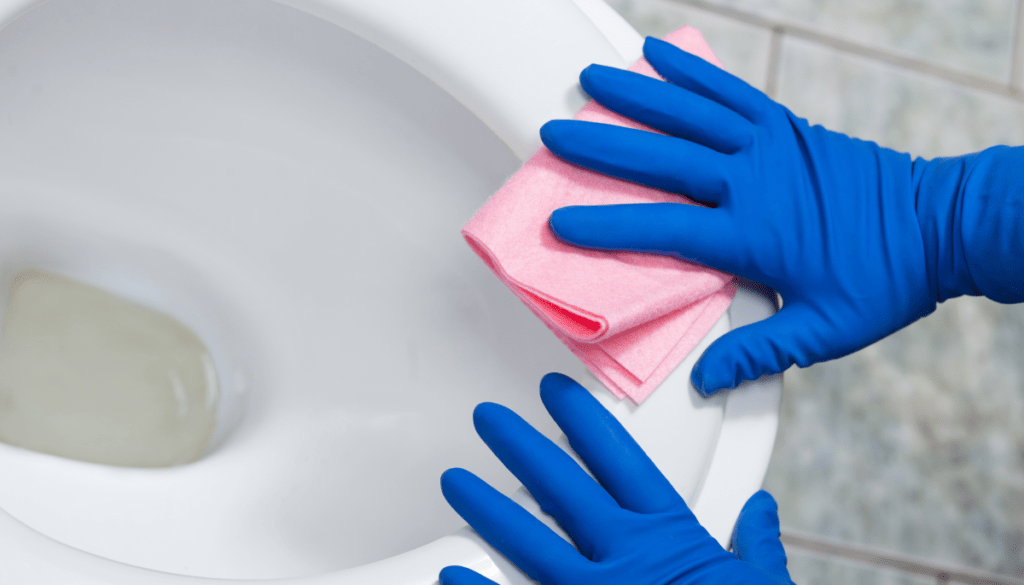The Reality of Cross-Contamination
Cross-contamination occurs when cleaning tools, like rags, are used in multiple areas without proper precautions. For example, a cleaner might use the same rag to clean a restroom and then your desk, simply because there isn’t a strict system in place to prevent this from happening. Picture this: the cleaning cart is stocked with various chemicals and rags. As the cleaner moves from one part of the building to another, they might unknowingly grab the same rag they used in the restroom to clean your workspace. Without clear guidelines, it’s easy to see how this mistake could occur.
Steps to Prevent Cross-Contamination
To prevent this kind of contamination, your janitorial service provider should have three key systems in place:
1. Defined Cleaning Routes and Carts
One effective strategy is to assign different cleaners to specific areas of the building. For example, one person could be responsible for cleaning offices, while another handles restrooms, breakrooms, and common areas. Even if only one cleaner is on the job, there should still be a clear separation between the areas they clean. Ideally, separate carts should be used for different sections of the building—one for restrooms and another for offices and common areas. While this doesn’t completely eliminate the risk of cross-contamination, it significantly reduces it.
2. Designated Rags for Different Tasks
A well-organized cleaning company will have a system for using specific rags in specific areas. For instance, they might use color-coded microfiber cloths: red for restrooms, blue for offices, and so on. Some companies might opt for disposable rags or paper towels in areas like restrooms to further minimize the risk of cross-contamination. The key is consistency—ensuring that the same rags are always used for the same types of tasks helps keep your workspace sanitary.
3. Comprehensive Training for New Cleaners
No matter how good a system is, it’s only effective if the staff knows how to use it. This is where training comes in. A reputable janitorial service should have a thorough training program that includes new-hire orientation, on-the-job training, and ongoing supervision. New cleaners should be trained on the importance of preventing cross-contamination and how to implement the company’s cleaning procedures. With the right training, cleaners will be more likely to follow the systems designed to keep your workplace safe.
Final Thoughts
The janitorial industry is highly competitive, with many companies vying for your business. However, not all of them have the necessary processes in place to ensure your office is cleaned safely. Before choosing a janitorial service, ask about their procedures for preventing cross-contamination. This simple step could save you from unpleasant surprises and ensure that your workspace remains a clean and healthy environment for you and your team.
By being vigilant and choosing a cleaning service with the right processes in place, you can avoid the discomfort of wondering whether your desk was cleaned with a rag that was used in the bathroom. Instead, you can focus on your work, confident that your environment is as clean and safe as possible.


